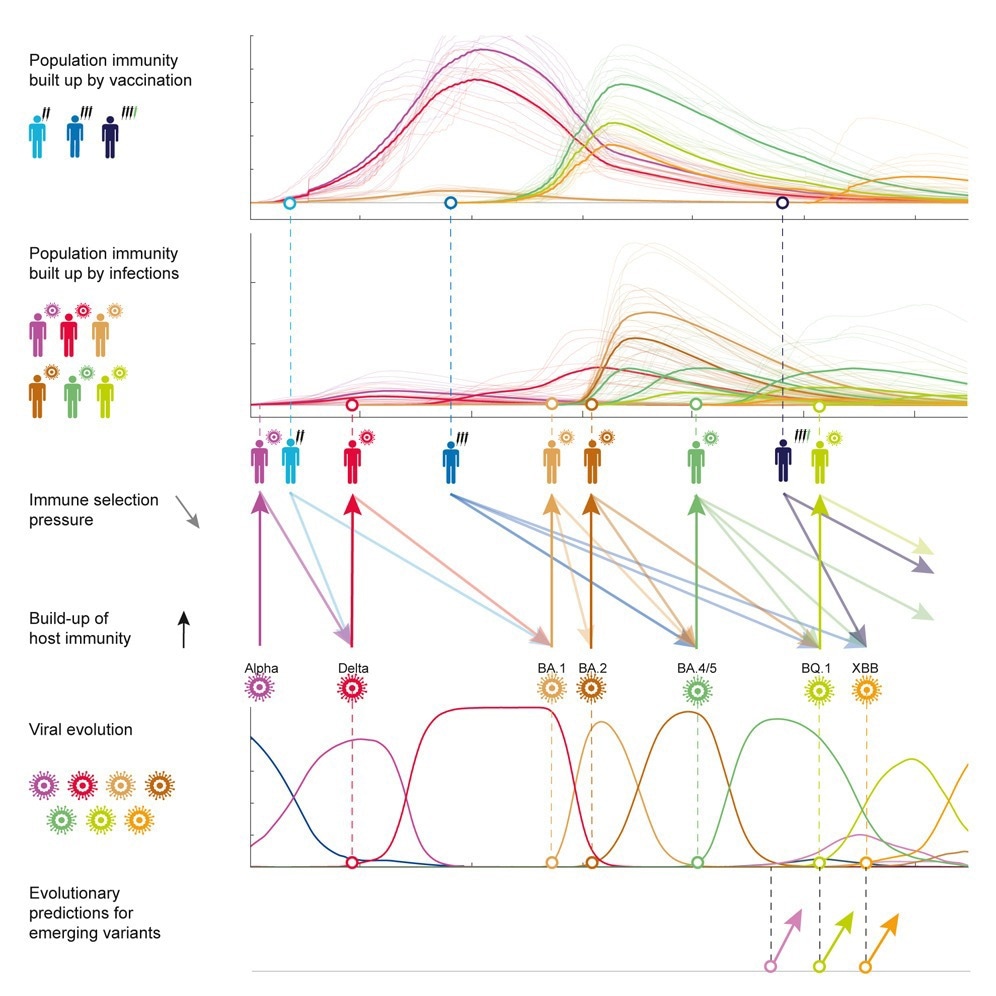The ongoing evolution of SARS-CoV-2 involves intrinsic adaptations that enhance viral functions and antigenic mutations that evade immune responses. These adaptations, fueling the emergence of dominant clades like Alpha, Delta, and Omicron sub-variants, are partially driven by the virus's response to population immunity built through prior infections and massive vaccination efforts, with over 10 billion doses administered globally.
Why a Sophisticated Fitness Model is Needed
This complex interaction underscores the need for further research using a sophisticated fitness model that integrates both intrinsic and antigenic changes and accounts for the influence of widespread immunity. Such a model is crucial for predicting future evolutionary paths of SARS-CoV-2 and informing global health strategies.
Methodology and Data Sources
The study harnessed public data to analyze SARS-CoV-2 neutralization, focusing on antibody effectiveness against various strains and their decay over time. Utilizing existing resources, the researchers did not produce new reagents but employed rigorous methodologies and comprehensive data tables. They also factored in data gaps, using precise formulas for absolute neutralization titers.

Central to the research, the neutralization assays were used not only to determine the potency of antisera against different virus strains but also to compute the decay in antibody concentration post-vaccination, utilizing a linear reduction model. Furthermore, they leveraged public health sequence data, applying strict quality controls before deducing a strain tree and analyzing variant frequency trajectories. Publicly sourced infection and vaccination rates informed clade-specific infection rates under stringent criteria, ensuring data consistency across regions. Only thirteen regions met the comprehensive analysis requirements.
The researchers explored cross-immunity trajectories, establishing a factor for reduced infections from previous immunity that wanes over time, and devised a mathematical model of this temporal immunity, essential for grasping population-wide cross-immunity. The study employed a fitness model, bifurcating intrinsic fitness and antigenic fitness, the latter influenced by cross-immunity. This model, realistic in its consideration of multiple exposures, gauges the virus's spread capability among strains, highlighting the cumulative effect of various immune responses.
The model's robustness was validated, acknowledging mutations' potential impacts and Non- Pharmaceutical Interventions (NPIs') role. Despite these, the findings align with the model's initial assumptions. Simplifications in the model, denoted as γk, prevent overfitting and accommodate real-world complexities. The model's validity was reaffirmed through comparative analysis, proving its reliability in predicting virus evolution and the emergence of new variants. Predictions for future strains were precisely crafted, incorporating data inconsistencies and statistical uncertainties, to accurately forecast the virus's antigenic evolution.
Shifting Infection Rates and Variant Diversity
The present study analyzes SARS-CoV-2 data from 13 regions since spring 2021, emphasizing infection rates, vaccination types, and virus evolution through over 8 million genetic sequences. Initial immunity was boosted by vaccinations, later by infections, with significant shifts in viral variants and diversity noted from 2022.
The study delved into the antigenic evolution of SARS-CoV-2 by utilizing cross-immunity data among different variants, establishing a cross-immunity matrix through neutralization assays, and observed that the highest immunity was present within the same variants, gradually declining with the emergence of new strains. They mapped immunity trajectories by integrating data on immunization timing, infection rates, and vaccinations.
A fitness model quantified the cross-immunity impact on viral evolution, incorporating reproductive numbers and generational intervals, predicting strain competition and adaptation. However, individual cross-immunity variations and multiple infections were not considered. The model was calibrated with actual virus frequency data, demonstrating consistency with empirical data, especially concerning vaccination impact and immune waning on viral evolution.
How Vaccinations and Infections Shape the Virus's Path
The study highlights antigenic changes as pivotal in virus selection over intrinsic factors like transmissibility. The fitness model illustrates the selection forces behind major clade shifts, initially driven by intrinsic factors, then by antigenic selection post-Alpha, slowing down as the virus approaches endemicity.
Vaccination-induced antigenic selection is crucial in the virus's path. Primary vaccinations spurred positive selection, while broader-immunity boosters initially presented weaker selection for antigenic escape, changing with post-BA.2 variants. The model emphasizes the nuanced influence of vaccinations and prior infections on SARS-CoV-2 evolution.
The model accurately predicts short-term evolution and variant frequencies, like BF.7, BQ.1, and XBB, with XBB.1.5's surge attributed to enhanced Angiotensin-Converting Enzyme 2 (ACE2) binding. It forecasts antigenic profiles based on past immunity responses, identifying periods of intense antigenic selection. New variants, such as post-BA.4/5 exhibit convergent evolution, constrained by historical selection pressures. Surprisingly, BQ.1's fitness advantage is due to significant antigenic leaps, while XBB defies expectations based on mutations alone.
The model projects that bivalent booster vaccinations and recent infections will dominate the next antigenic shift, indicating that upcoming variants will likely adapt to these specific immune responses.